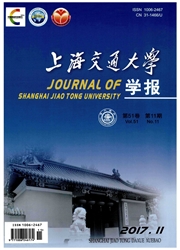

 中文摘要:
中文摘要:
采用修正的各向同性三维分形表面的W-M函数构造隧道掘进机掘进后的隧道粗糙表面;考虑法向支撑载荷作用和岩石在压缩载荷下的失效机制,建立了掘进机撑靴与岩石粗糙表面法向接触刚度模型.研究变载荷工况下,不同粗糙隧道表面特性与掘进机撑靴接触界面刚度特性变化规律.结果表明:岩石的失效对接触刚度特性影响明显,相同的载荷下,岩石的失效会带来接触刚度的减小;当岩石弹性模量相同时,接触刚度随着硬度的增大而增大;当岩石硬度相同时,接触刚度随着弹性模量的增加而减小;随着外部载荷的增加,粗糙表面的接触刚度随之增加,而表面粗糙度的增大会引起界面接触刚度相应减小.
 英文摘要:
英文摘要:
The rock surfaces of tunnel excavated by the Tunnel Boring Machine (TBM) have various rough characteristics, which is closely related to the load transmission, the direction of excavation, and the wear of cutterhead when the boots of TBM is put on it directly. In this paper, the description on the 3D isotropic fractal rough surfaces of tunnel was calculated by using the modified W-M function. The normal contact stiffness models were established considering the failure of rocks when it underwent compressive loads applied by the boots of shield machines. The normal contact stiffness behavior was investigated considering the variable loads, mechanical behavior of rocks, and the surface roughness. The results show the normal contact stiffness is dependent on the failure of rocks. When the load remains unchanged, the contact stiffness of the parts of failure rocks supporting loads is smaller than those. It decreases when rock failure occures on the contacting surface. The contact stiffness decreases with the increase of When elastic modulus remains unchanged, the contact stiffness increases as the har the hardness remains unchanged, the contact stiffness increases as the elastic modu the surface roughness. dness increases. When lus decreases.
 同期刊论文项目
同期刊论文项目
 同项目期刊论文
同项目期刊论文
 期刊信息
期刊信息
